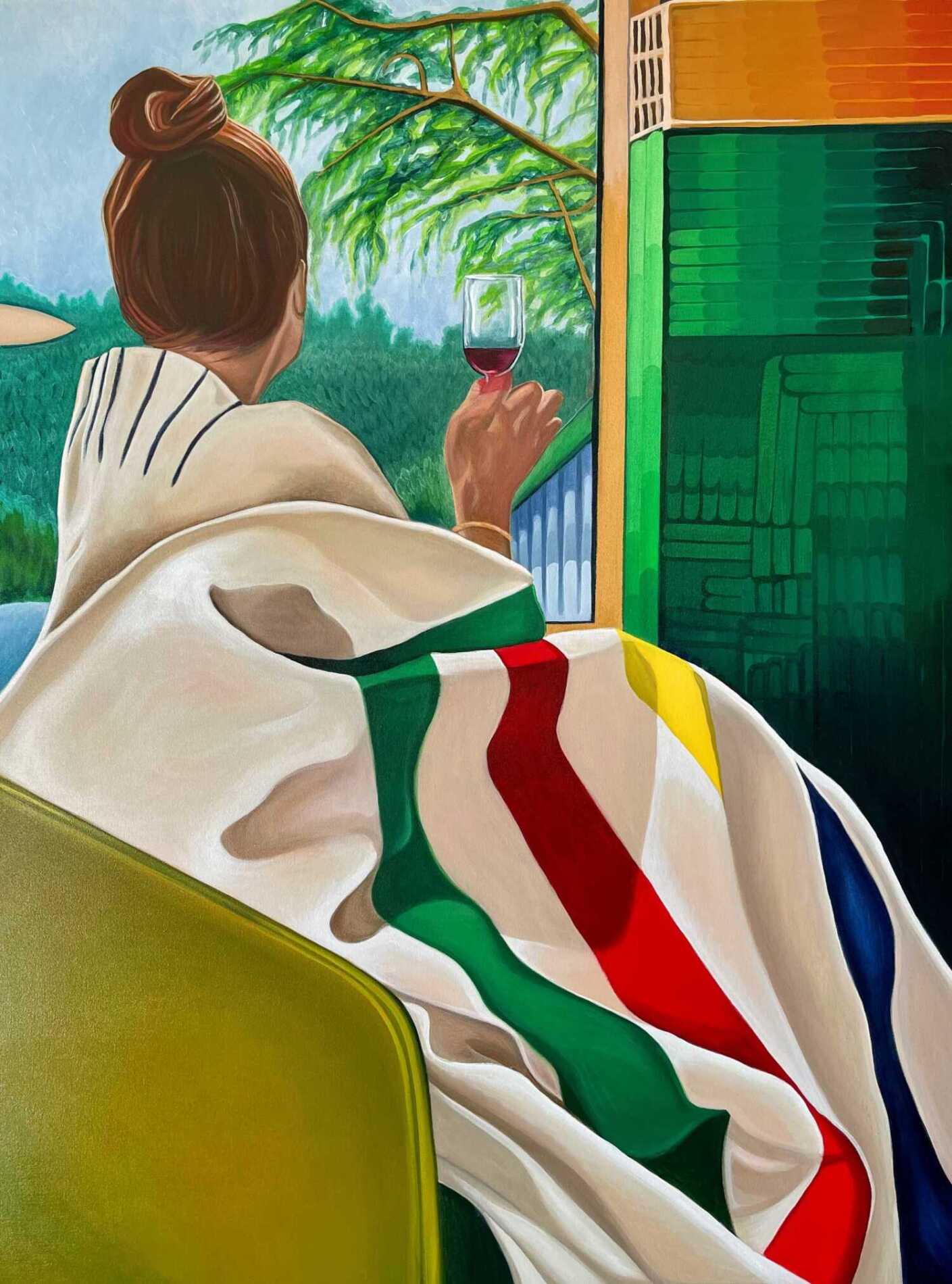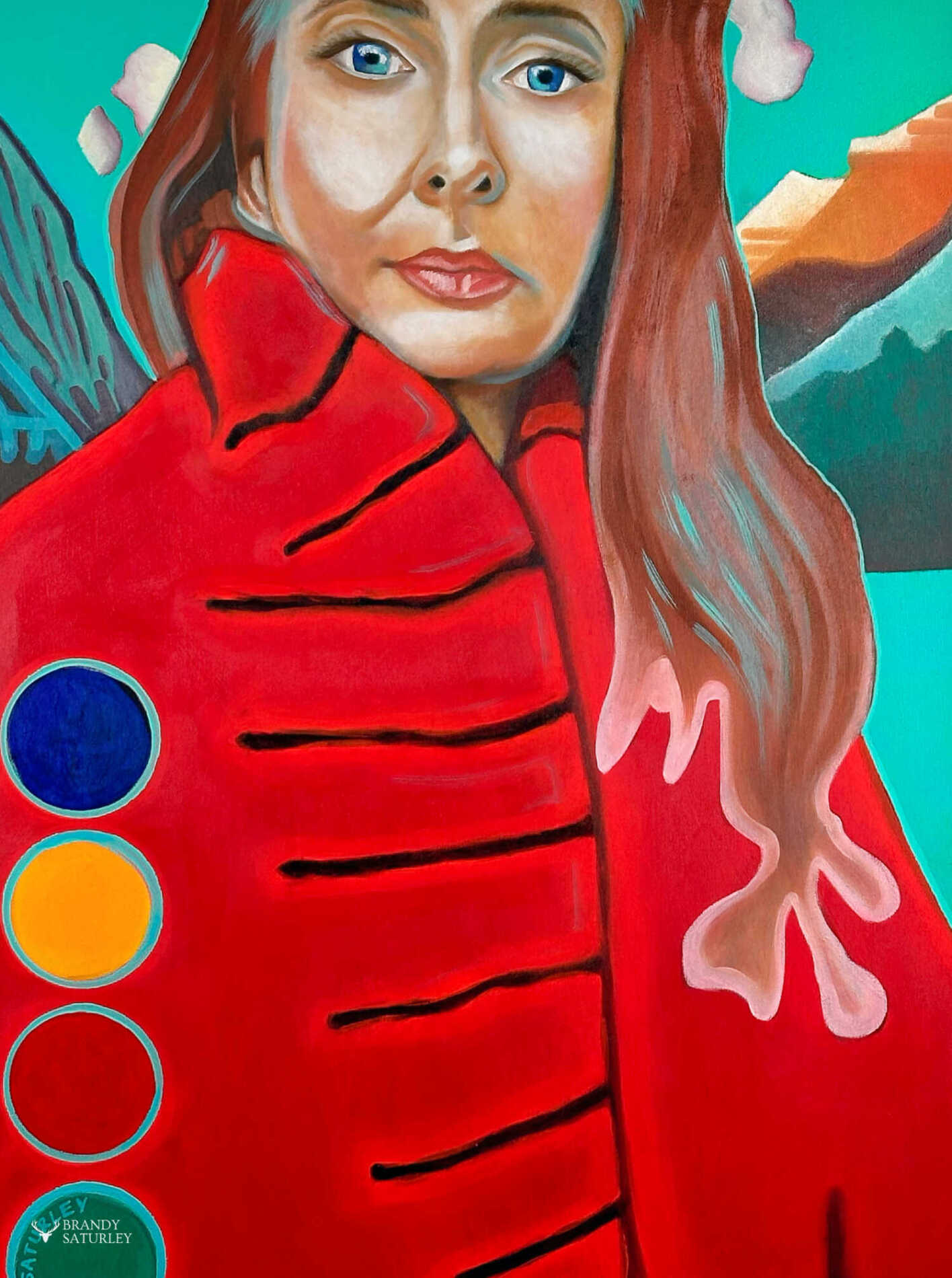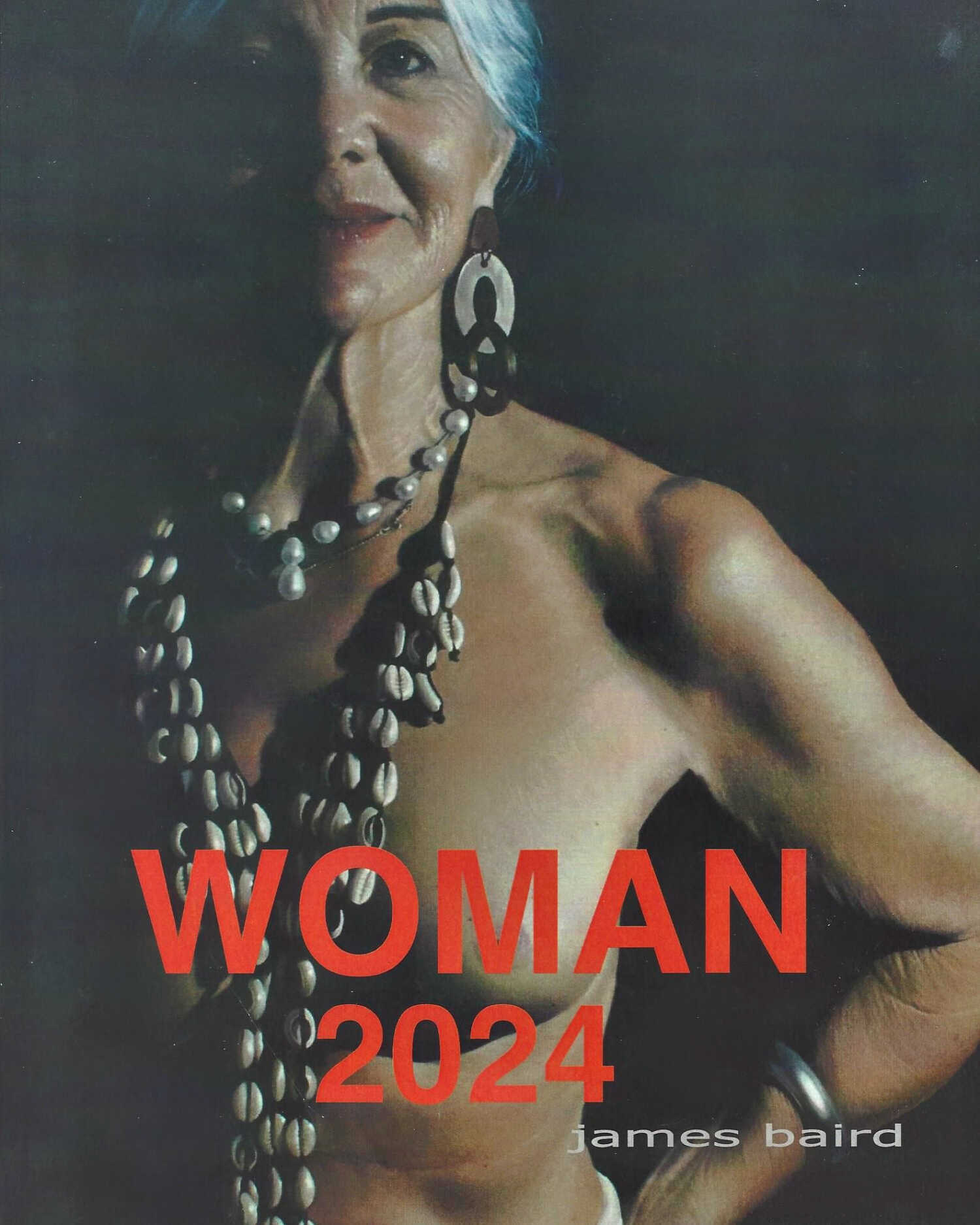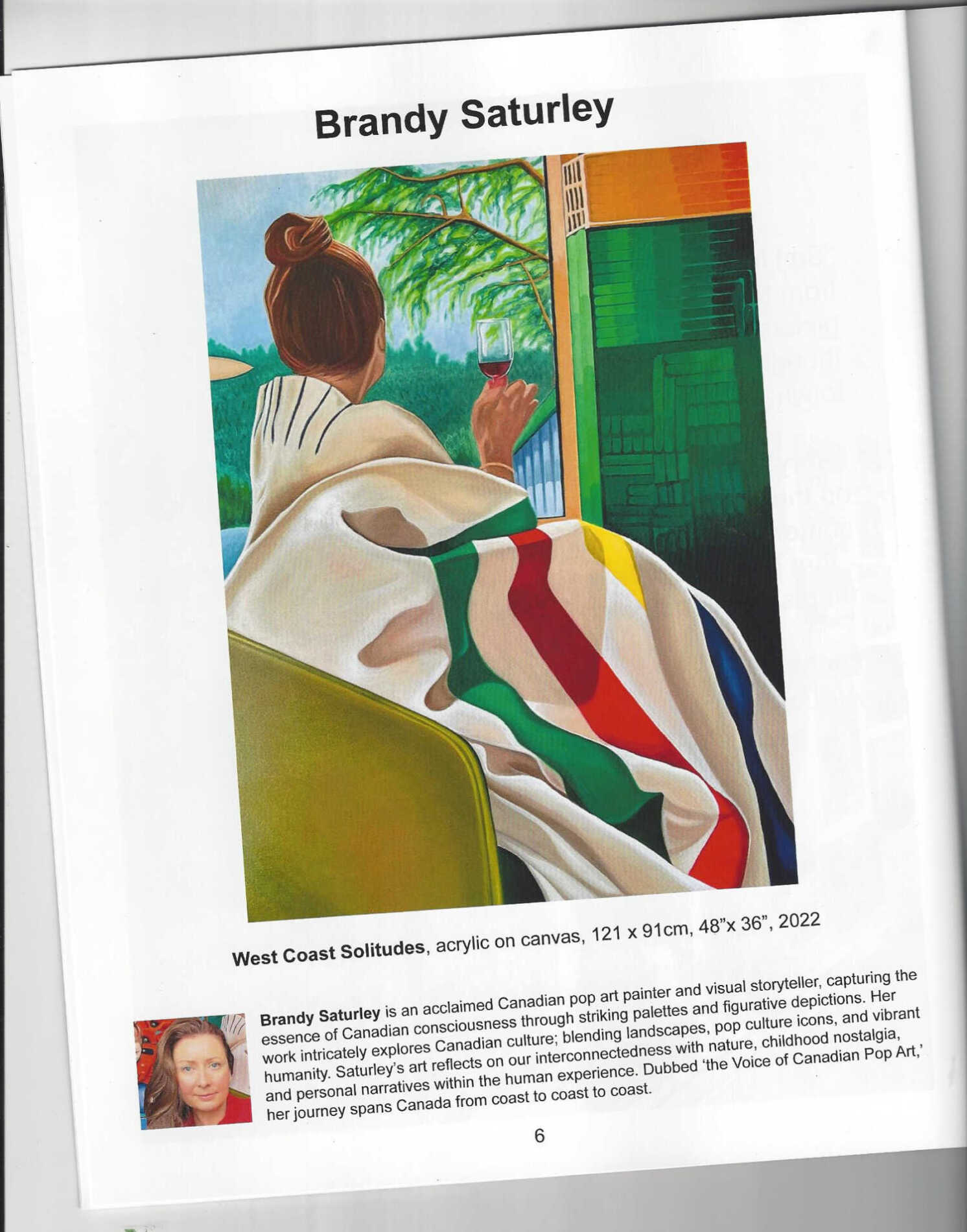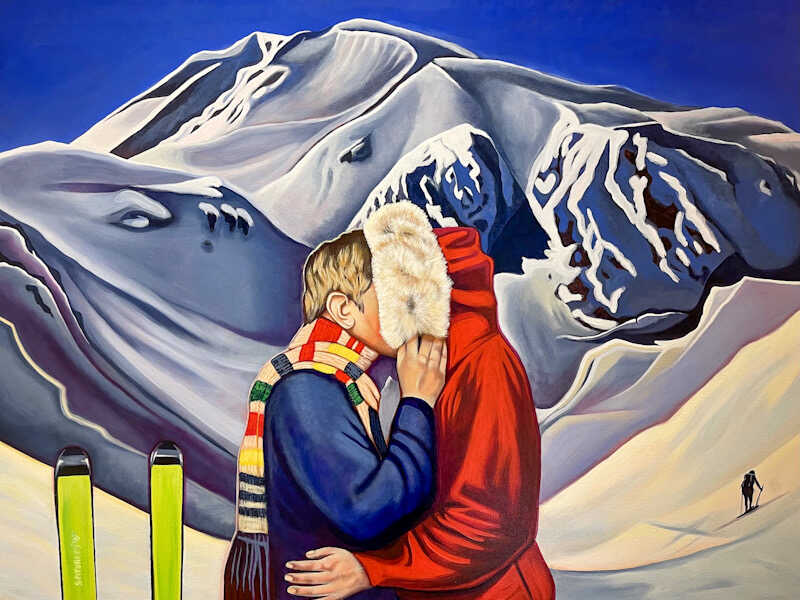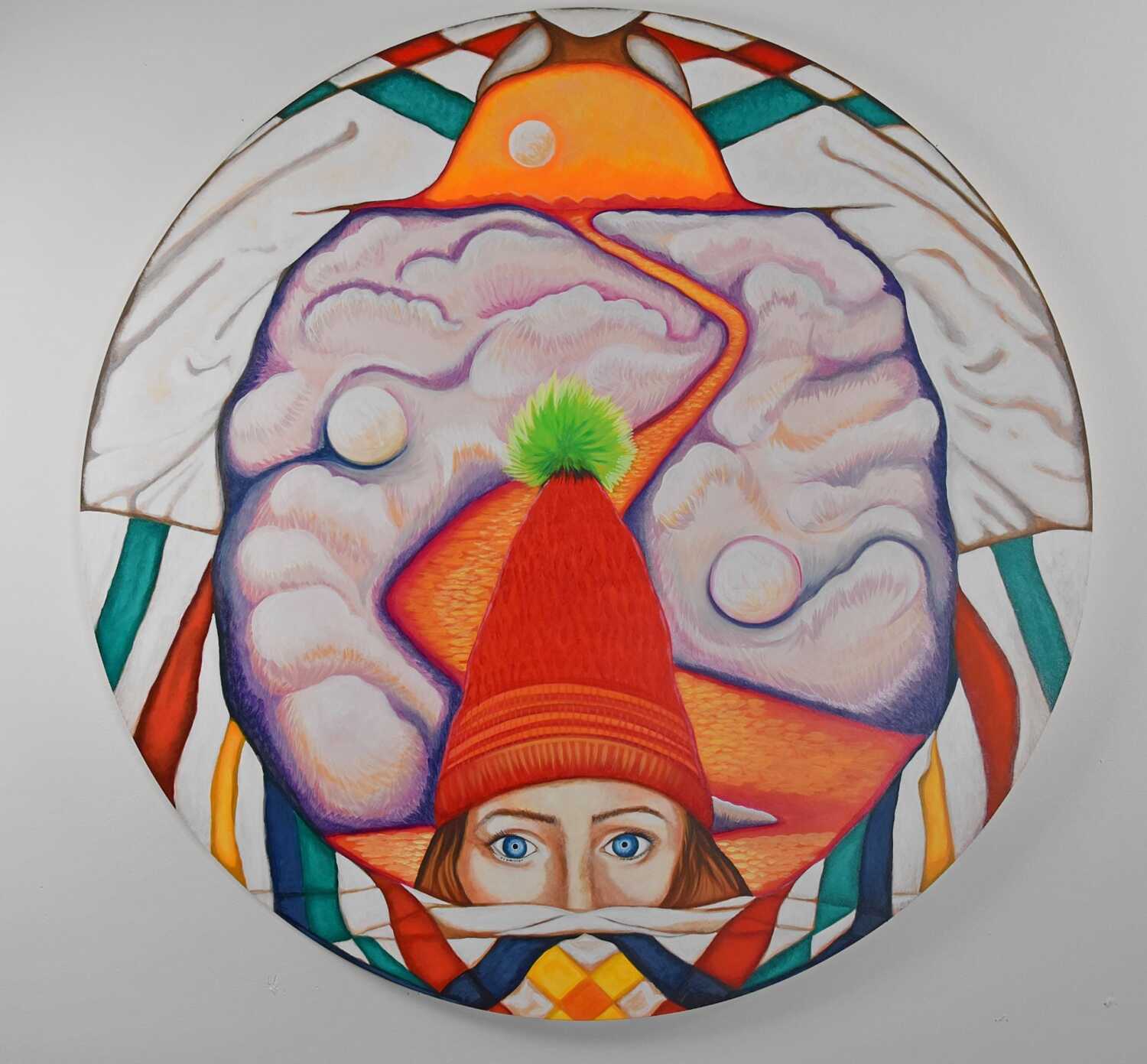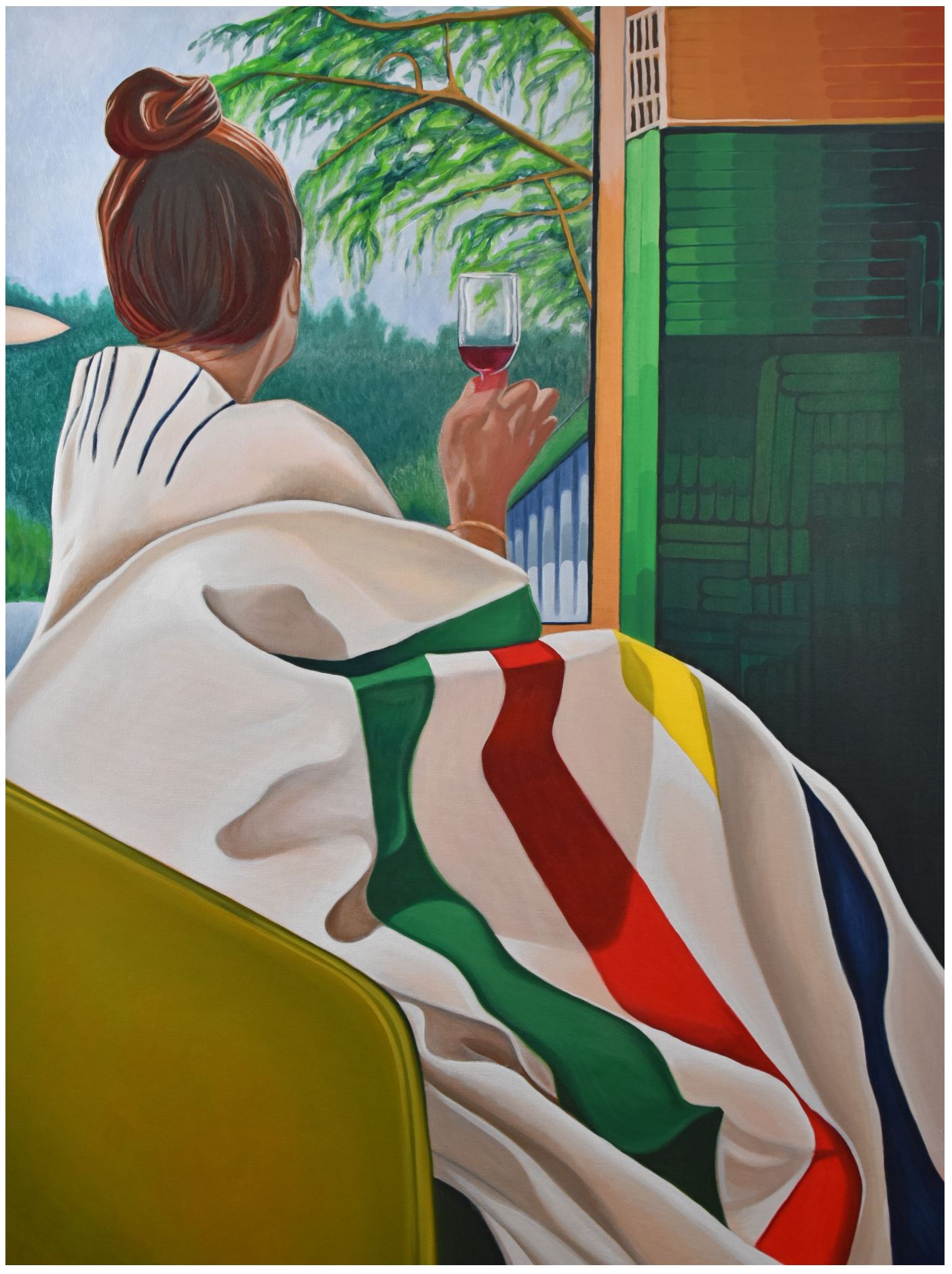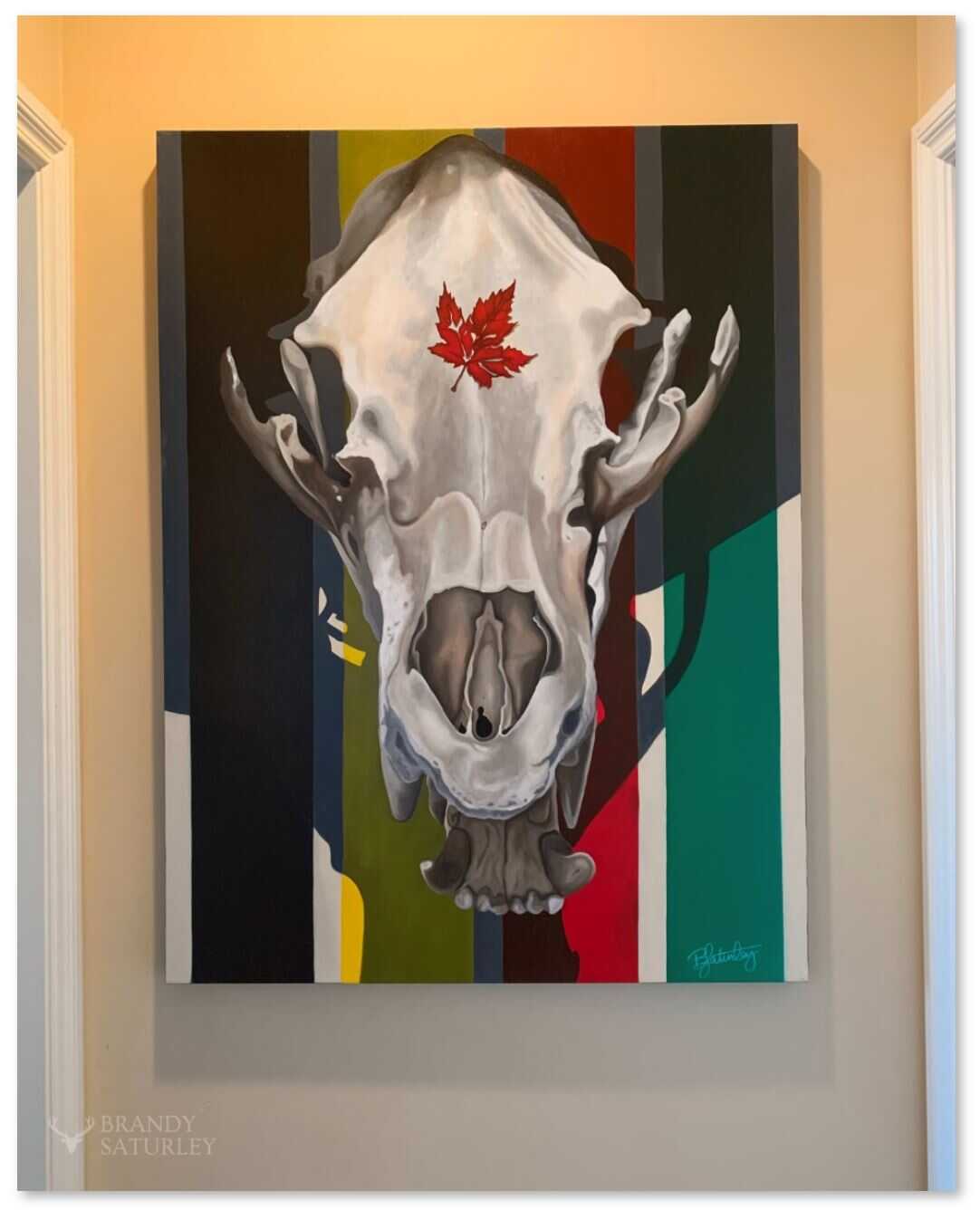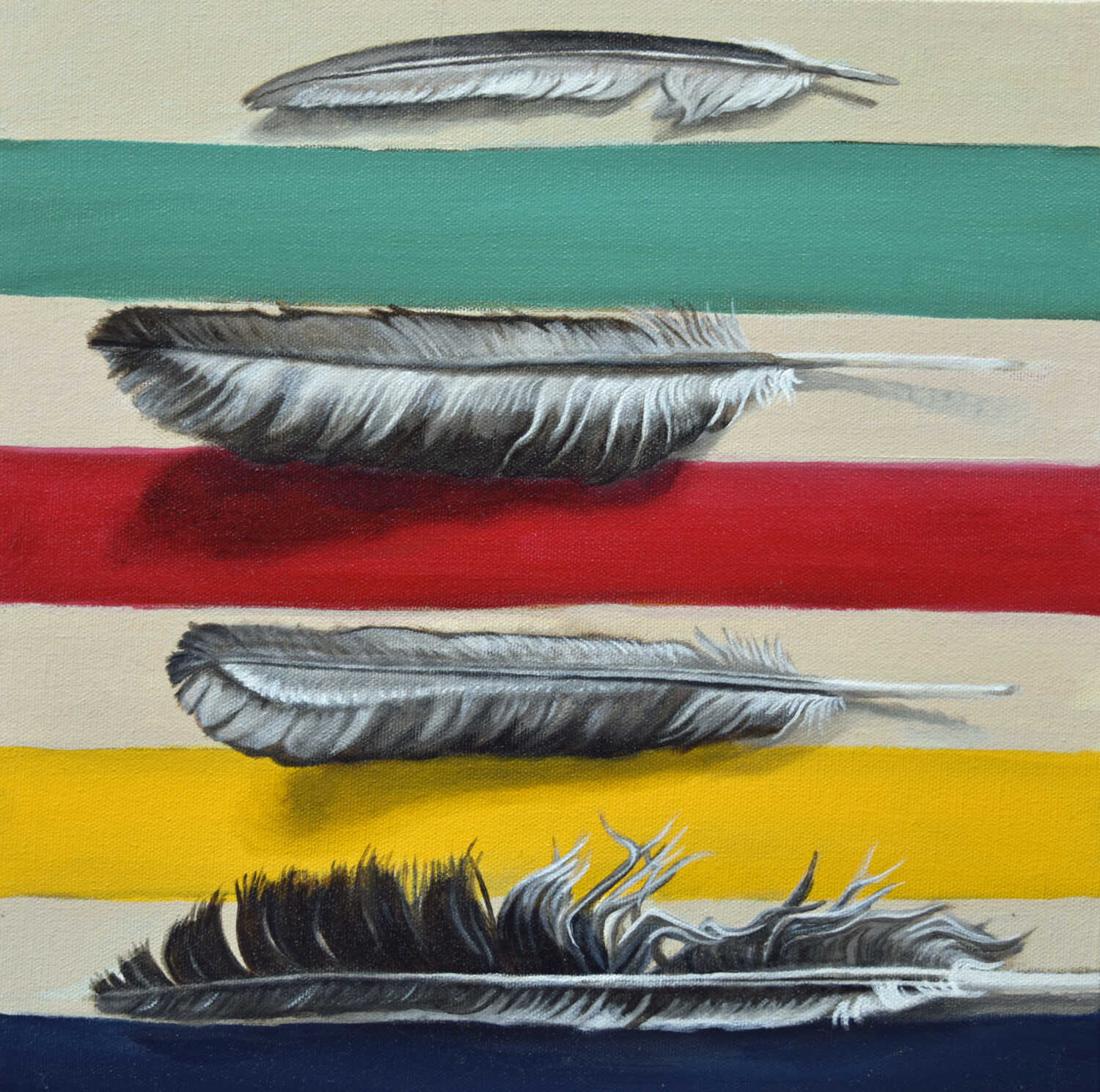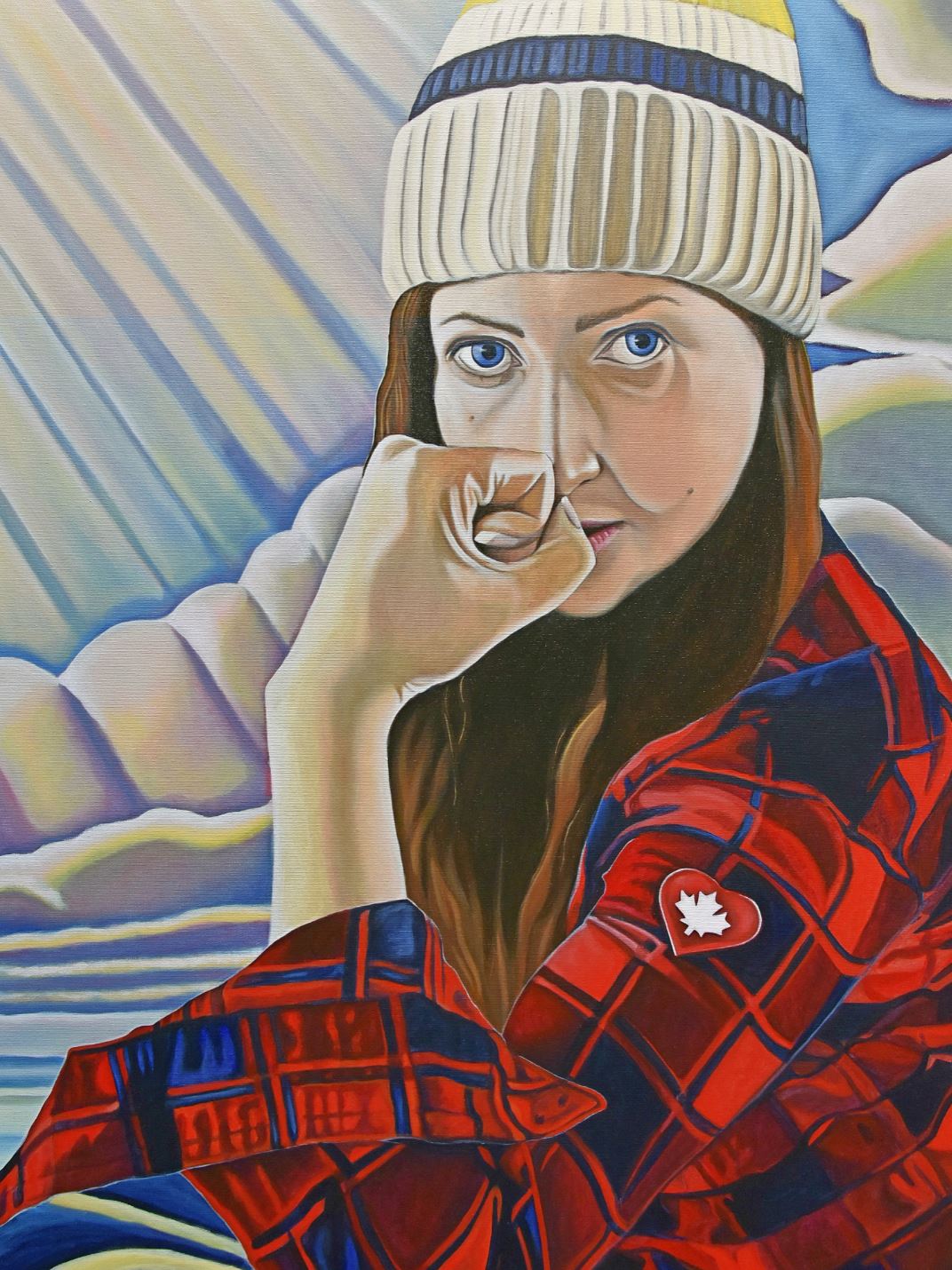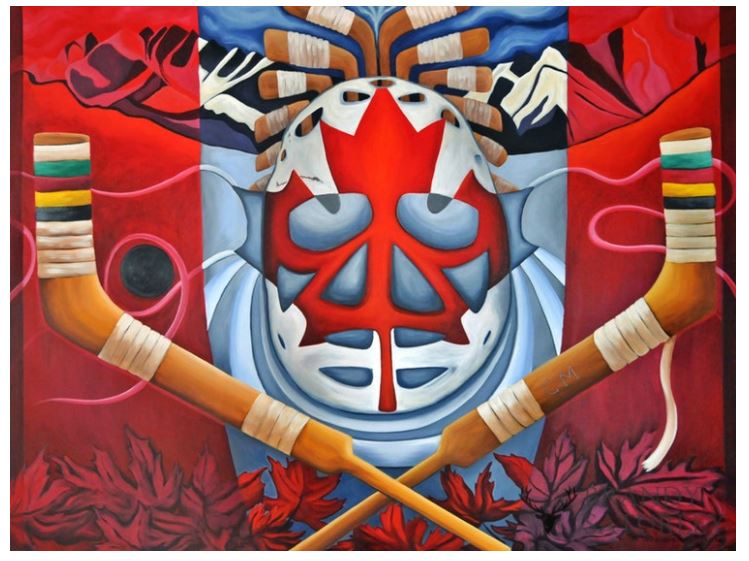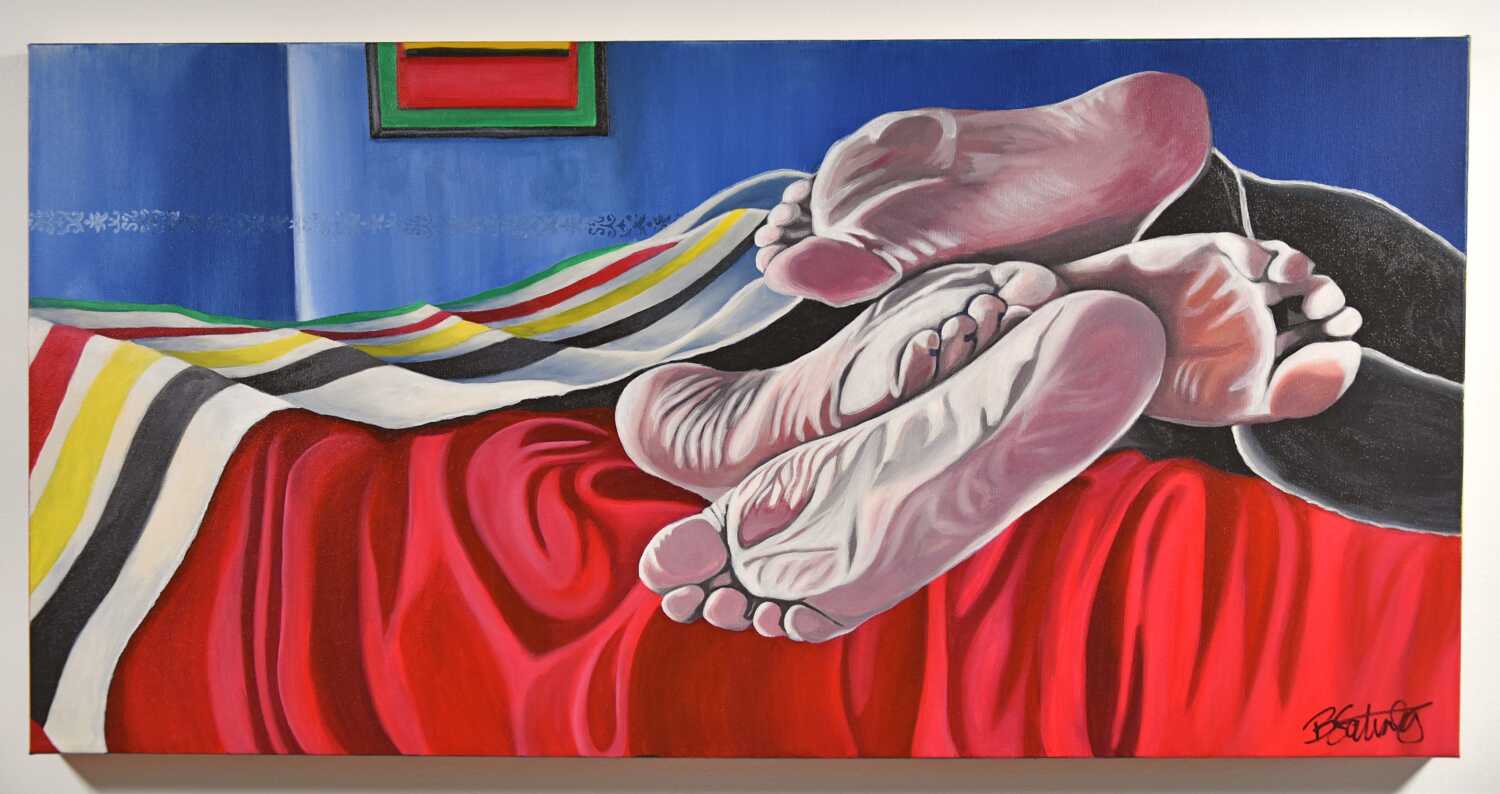Part of Canada’s History – The Iconic Hudson’s Bay Stripes Blanket
One of my fondest childhood memories is visiting the top-floor restaurant at the Hudson’s Bay Company department store in my hometown of Victoria, British Columbia. On occasional Sundays, my dad and I would head downtown to browse the aisles at The Bay. Our ritual would end with a stop at the soda shop on the top floor, where we’d sit at the bar, sipping frosty chocolate malts. From our perch, we’d watch shoppers weave through the displays of housewares and neatly stacked Hudson’s Bay Point blankets. That was my first encounter with the Hudson’s Bay Iconic Stripes—a symbol of Canadian heritage that has remained etched in my memory.
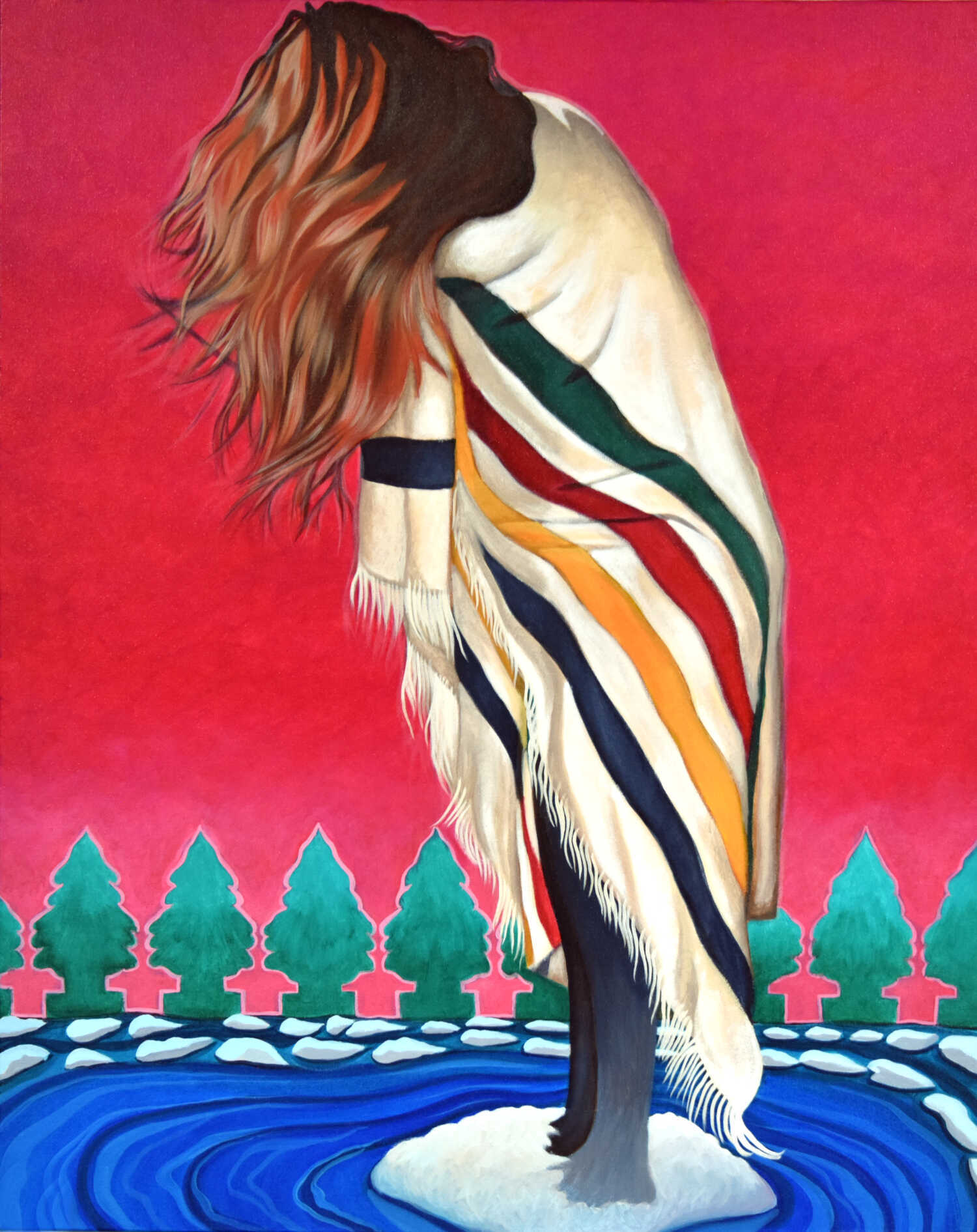
Floating Downstream, acrylic on canvas, 2018, Brandy Saturley
Years later, through history classes, I came to understand the deeper significance of those colourful stripes. More than just a cozy household item, the Hudson’s Bay Point Blanket carries with it a complex and layered history, entwined with trade, colonialism, and the shaping of Canada.
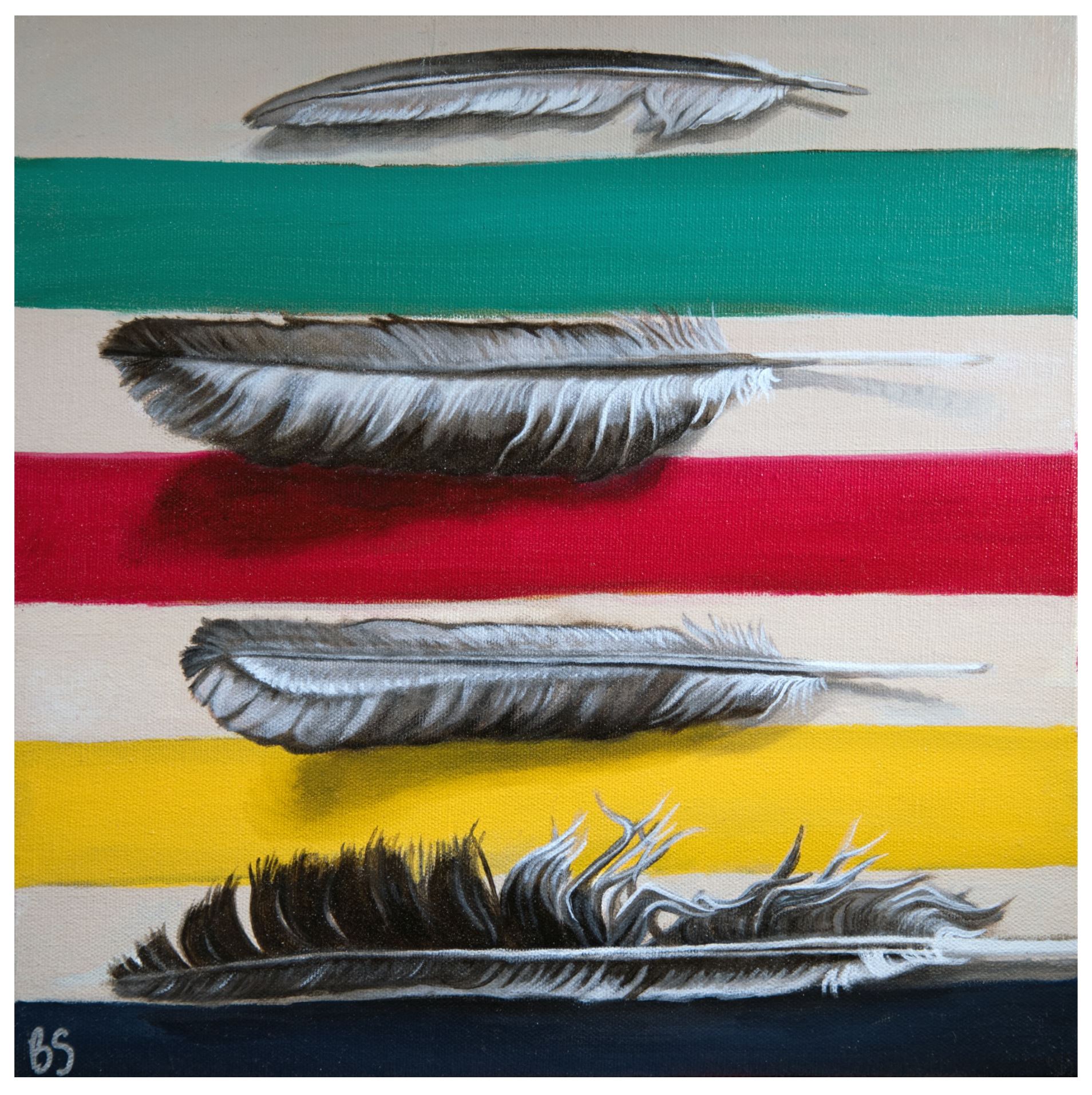
Feather’s Over Blanket, acrylic on canvas, 2016, Brandy Saturley
The History of the Point Blanket
First produced for the Hudson’s Bay Company (HBC) in 1779, the Hudson’s Bay Point Blanket is a wool blanket marked by a series of distinctive stripes—green, red, yellow, and indigo—set against a white background. These colours are now emblematic of the HBC brand. Interestingly, the HBC did not invent the point blanket but rather popularized it in Canada. The original point blankets were woven by French artisans in the 17th century, who developed the “point system” to indicate the blanket’s size. The term point comes from the French word empointer, meaning “to make threaded stitches on cloth.” The black lines stitched into the corner of the blanket signified its size—one point for smaller blankets, and up to four points for larger ones.
During the fur trade, point blankets became a key commodity, often traded for beaver pelts and other goods. By the 1700s, they made up over 60% of the merchandise exchanged by the HBC. The blankets were adopted by both Indigenous and settler communities for practical purposes: bedding, clothing, and even as room dividers. For many Indigenous nations, blankets held deep cultural significance, serving as symbols of status and used in ceremonies. Prior to the introduction of European wool blankets, Indigenous peoples crafted their own from animal hides and furs.
A Symbol of Canadian Identity
By 1929, the Hudson’s Bay Company expanded its colour range and began promoting the blankets as home décor essentials, cementing them as a staple of Canadian households. The blankets were also produced for special occasions, such as the coronation of Queen Elizabeth II, which saw the release of a royal purple blanket with white stripes. Over time, the colours and stripe patterns were standardized, giving the blanket its iconic, recognizable design.
Today, the Hudson’s Bay stripes have transcended their original purpose, becoming a symbol of Canadian heritage and style. The classic design has been applied to everything from umbrellas to phone cases, making it a recognizable emblem of Canadiana. It frequently appears in home décor magazines and lifestyle blogs, celebrated for its vintage charm and nostalgic appeal.
Hudson’s Bay Iconic Stripes – An Icon in My Art
For me, as a Canadian artist who paints symbols of this country, the Hudson’s Bay stripes have become a recurring motif in my work. The blanket’s bold palette and distinctive pattern evoke a sense of nostalgia and national pride. Over the years, it has featured in many of my paintings—sometimes as a backdrop, other times as the focal point—representing themes of home, heritage, and identity.
Most recently, the news of the Hudson’s Bay Company filing for creditor protection and liquidating all but six of its stores marks the end of an era. Though the company may be coming to an end, the legacy of the striped blanket endures—a timeless symbol of Canada’s history, stitched into the fabric of our culture.

